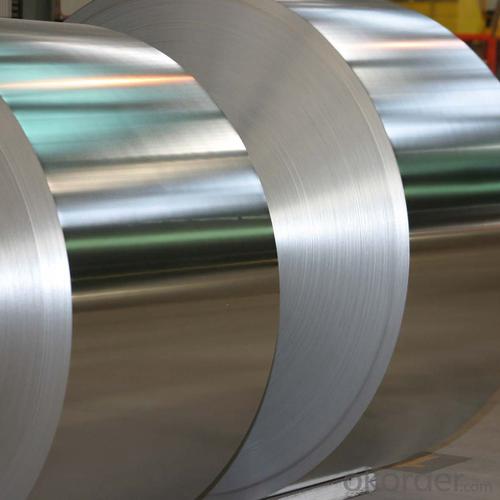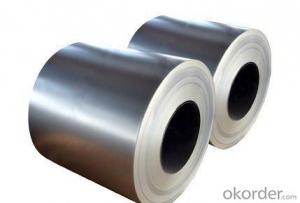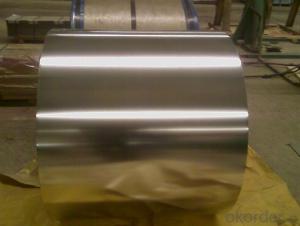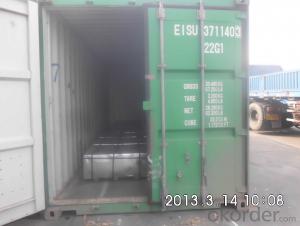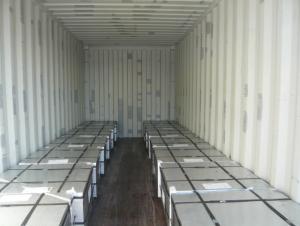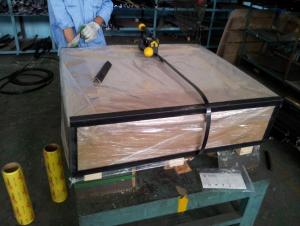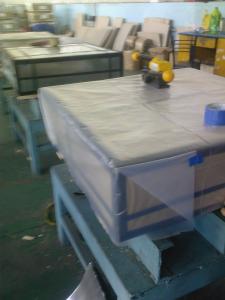Tin Free Steel and Tinplate for Prime Quality and best Price
- Loading Port:
- Tianjin
- Payment Terms:
- TT OR LC
- Min Order Qty:
- 50 m.t.
- Supply Capability:
- 40900 m.t./month
OKorder Service Pledge
OKorder Financial Service
You Might Also Like
Prime Quality Tinplate Sheets Details
1.Structure of Description
Electrolytic Tinplate Sheets is one of the metal packing materials, which is widely used for making painting cans ,chemical package cans , electrical cable ,battery and metal printing etc. For caps, there are some customers also need TFS, if you have some demand for TFS,also can contact with us.
2. Main Features
Steady and high quality
Fast shipment
Good experience for export work
For the surface, Plate uniform in thickness,uniform and smooth tin coating, without flaws,rusts,scratch,wave,nick of tin coating etc.
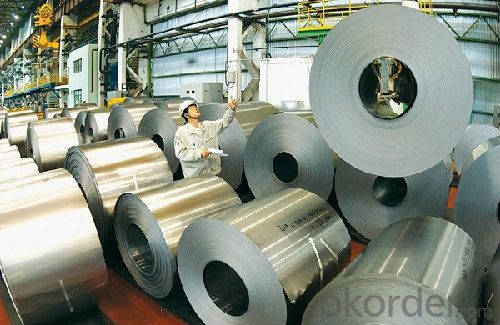
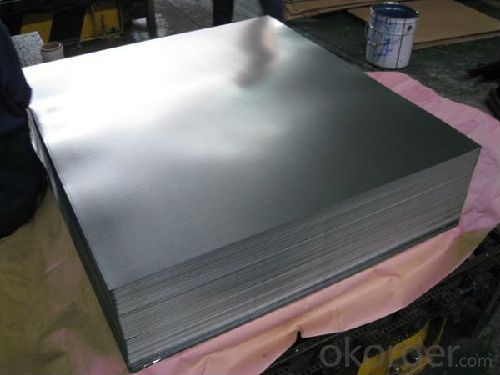

Minumum Order Quantity: 25 MT Loading Port:China Main Port
Annual Capacity: 400,000MT Payment Terms:TT or LC
Product Specifications:
Prime Quality Tinplate Sheets Usage and Applications
Prime Quality Tinplate Sheets Specifications
Standard : GB2520-2000 ,JIS G3303
Steel type : SPCC
Coating : 2.8/2.8
Surface: Bright, Stone ,
Thickness:0.18
Width :600MM~1000MM
Temper : T1~T5
Package: tinplate wrapped completely with an inner cover of plastic or waterproof papers with vorners protected with metal angels.
Applications
Chemicals and painting cans
Dry food cans, such as fancy cans, biscuit cans, milk power cans, tea cans
Liquid food cans, such as edible oil cans, beverage cans, Tomato paste cans
Sea food cans
Crown corks, easy open ends(EOE)
Electrical machinery parts
Bakeware and household kitchen parts
FAQ
A. What is the package of tinplate? (Referred as below)
For sheets, thin plastic film + rust-proof paper + metallic cover + metallic angles+ steel band strips + fumigated wooden pallet.
For coil, thin plastic film + rust proof paper + metallic cover + steel band strips + fumigated wooden pallet
B. The surface of tinplate could you supply?
Stone finish, Bright finish, Matte finish, Silver finish
- Q: How does tinplate packaging contribute to product differentiation?
- Tinplate packaging contributes to product differentiation by providing a unique and attractive look that distinguishes a product from its competitors. The use of tinplate allows for creative and eye-catching designs, which can effectively communicate the brand's identity and create a memorable impression on consumers. Additionally, tinplate packaging offers durability and protection, ensuring that the product remains in good condition throughout its shelf life. This enhances the overall perceived value of the product and sets it apart from alternatives, thus contributing to product differentiation.
- Q: Can tinplate be used for electrical components?
- Yes, tinplate can be used for electrical components. Tinplate is a type of steel coated with a thin layer of tin, which provides good electrical conductivity and corrosion resistance. It is commonly used for manufacturing electrical components such as connectors, terminals, and shielding materials.
- Q: How does tinplate contribute to the reduction of carbon emissions?
- Tinplate contributes to the reduction of carbon emissions through its sustainable production process and recyclability. Compared to other packaging materials, tinplate has a low carbon footprint as it requires less energy and releases fewer greenhouse gases during manufacturing. Additionally, tinplate is a highly recyclable material, allowing for the efficient reuse of resources and reducing the need for new production. By promoting the use of tinplate, we can minimize carbon emissions and work towards a more environmentally friendly packaging solution.
- Q: Can tinplate be used for packaging heavy products?
- Yes, tinplate can be used for packaging heavy products. Tinplate is a strong and durable material that can withstand the weight of heavy items, making it suitable for packaging purposes. Its resistance to corrosion and ability to protect the contents from external factors further enhance its usefulness for packaging heavy products.
- Q: What are the common challenges in recycling tinplate packaging?
- Some common challenges in recycling tinplate packaging include the separation of tinplate from other materials, such as plastic or paper, which can be time-consuming and costly. Additionally, the removal of any residual contents or labels from the tinplate can be challenging. The recycling process may also be complicated by the presence of coatings or laminations on the tinplate. Finally, the availability of recycling facilities specifically equipped to handle tinplate packaging can be limited, leading to logistical difficulties in the recycling process.
- Q: How does tinplate impact the overall product safety?
- Tinplate is known for its excellent barrier properties, durability, and resistance to corrosion, making it a popular choice for packaging food and beverages. Its impact on overall product safety is significant as it helps to prevent contamination, preserve product freshness, and extend shelf life. Tinplate acts as a protective barrier between the product and external factors such as light, air, moisture, and bacteria, ensuring that the contents remain safe and uncontaminated. Additionally, tinplate is non-toxic, making it a safe material for packaging edible goods. Overall, tinplate positively contributes to product safety by providing a reliable and secure packaging solution.
- Q: Is tinplate affected by moisture or humidity?
- Yes, tinplate is affected by moisture or humidity. Tinplate is a thin sheet of steel coated with a layer of tin, which provides corrosion resistance. However, prolonged exposure to moisture or high humidity can cause the tin layer to react with the steel, leading to corrosion and degradation of the tinplate's properties. It is important to store and handle tinplate in conditions that minimize exposure to moisture and humidity to maintain its integrity.
- Q: Can tinplate be recycled with other metals?
- Yes, tinplate can be recycled with other metals. Tinplate is typically made from steel coated with a thin layer of tin, and both steel and tin can be recycled. When tinplate is recycled, it is usually separated from other materials and processed separately to recover the steel and tin content.
- Q: How does tinplate compare to aluminum packaging in terms of cost?
- Tinplate packaging is generally more cost-effective compared to aluminum packaging. Tinplate is known for its lower production and raw material costs, making it a more affordable option for packaging. On the other hand, aluminum packaging tends to be more expensive due to the higher cost of aluminum as a raw material and its energy-intensive production process. Therefore, when considering cost, tinplate is often a more economical choice for packaging solutions.
- Q: Can tinplate be used for petrochemical packaging?
- Yes, tinplate can be used for petrochemical packaging. Tinplate is a type of steel coated with a layer of tin, which provides excellent corrosion resistance and protection against chemical reactions. This makes it suitable for storing and transporting petrochemical products safely.
Send your message to us
Tin Free Steel and Tinplate for Prime Quality and best Price
- Loading Port:
- Tianjin
- Payment Terms:
- TT OR LC
- Min Order Qty:
- 50 m.t.
- Supply Capability:
- 40900 m.t./month
OKorder Service Pledge
OKorder Financial Service
Similar products
Hot products
Hot Searches
Related keywords



